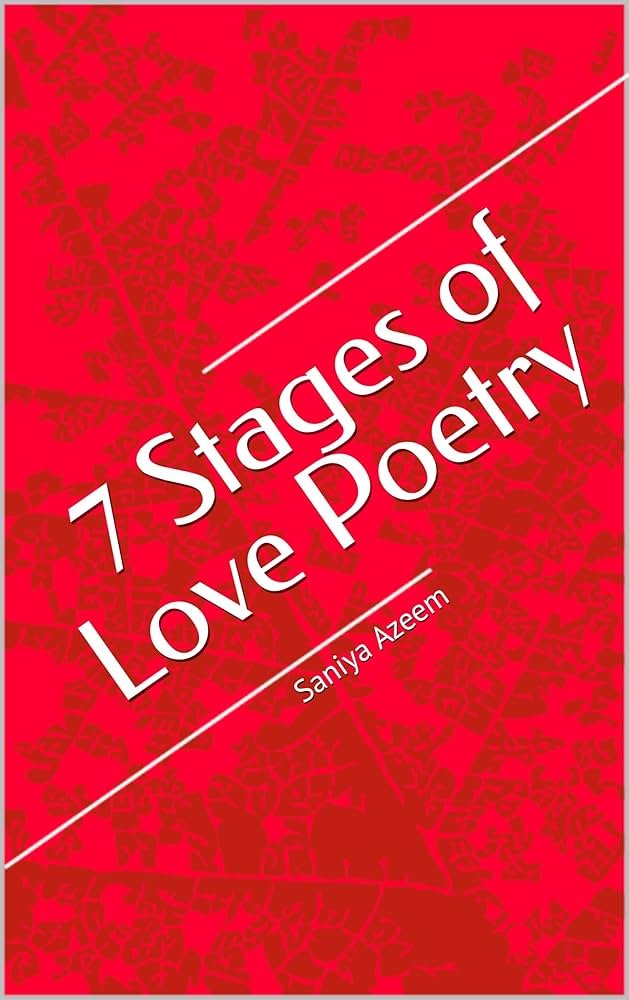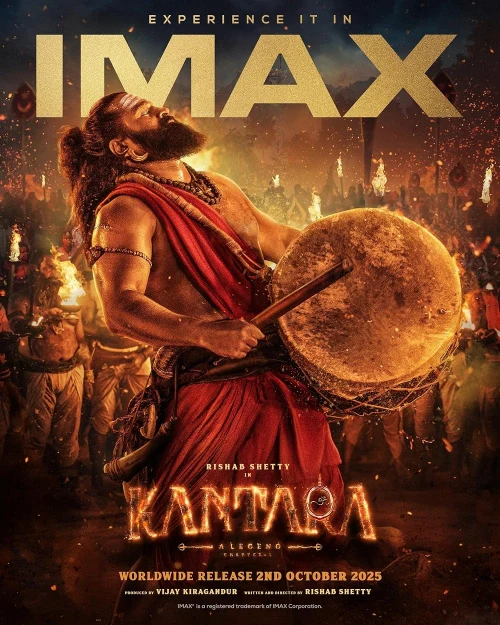
❤️ 7 Stages of Love Raanjhanaa (2013) Explained with Complete Movie Analysis
🗓️ Published on: 15th July 2025
📜 Table of Contents
- Introduction
- Stage 1 – Attraction (Muhabbat)
- Stage 2 – Infatuation (Uns)
- Stage 3 – Love (Ishq)
- Stage 4 – Worship (Ibādat)
- Stage 5 – Madness (Junoon)
- Stage 6 – Death (Maut)
- Stage 7 – Annihilation (Fanaa)
- Cast, Characters, and Performances
- Symbolism and Visual Language
- Music and Lyrics Impact
- Final Thoughts and Takeaway
🪷 Introduction to 7 Stages of Love Raanjhanaa
Raanjhanaa is not just a love story. It is a spiritual journey told through the eyes of a man deeply in love. Directed by Anand L. Rai and written by Himanshu Sharma, the film was released on 21st June 2013. It stars Dhanush, Sonam Kapoor, and Abhay Deol in lead roles.
What makes this film special is how it blends romance, religion, politics, and sacrifice. Dhanush, as Kundan, carries the whole film on his shoulders. But what really makes Raanjhanaa a masterpiece is how it subtly walks us through the 7 stages of love, often referenced in Sufi philosophy.
In this article, we’ll break down Raanjhanaa based on these 7 mystical stages. Each part will explore Kundan’s emotional transformation. We’ll go deep into the meaning, symbols, dialogues, music, and tragic beauty of each stage.
The film’s setting in Banaras (Varanasi) adds another layer of spirituality. The city, with its ghats, temples, and narrow lanes, becomes a silent character in Kundan’s journey. The Ganga river, the Holi festival, and the political unrest all mirror Kundan’s inner turmoil.
By the end, you’ll see why Raanjhanaa is more than a Bollywood romance—it’s a Sufi parable about love’s power to destroy and liberate.
✨ Stage 1 of 7 stages of love – Attraction (Muhabbat)
The story begins in Banaras. A young Kundan sees Zoya for the first time. She’s standing in her balcony, calm and pure. He is just a teenager, but he falls instantly. This is attraction at first sight.
This stage is innocent. It is filled with hope and childish joy. He follows her everywhere—school, tuitions, and temples. He even slaps himself every time she rejects him. His friends tease him, but he doesn’t stop. His heart has already decided.
In Sufi tradition, this stage is about noticing the divine beauty. The lover gets attracted to the beloved. In the movie, Zoya becomes that divine image for Kundan.
The cinematography captures her in soft light, making her seem almost ethereal. Kundan’s world turns into a fairytale. The song “Nazar Laaye Na” perfectly encapsulates this phase—playful, hopeful, and full of wonder.
But this is also the start of his downfall, though he doesn’t realize it yet. His love is one-sided, and Zoya sees him as nothing more than a persistent admirer.
💓 Stage 2 of 7 stages stages of love– Infatuation (Uns)
As Kundan grows up, his love turns into obsession. He cuts his wrist when Zoya says no. He converts to Islam for her. He thinks these grand gestures will make her love him.
This is the second stage—Uns (Infatuation). It’s deeper than attraction. Here, the lover starts to lose logic. Everything becomes about the beloved.
Kundan doesn’t care about his pain. He is willing to suffer endlessly. But Zoya is not ready. She likes him but does not feel the same way. For her, he is just a childhood friend.
This mismatch begins the emotional cracks in Kundan’s heart. He still believes he will win her.
In Sufi terms, the lover starts seeing the beloved as the center of the universe. But the beloved remains far away.
The Holi scene where Kundan chases Zoya, drenched in colors, symbolizes this chaotic passion. The song “Banarasiya” plays, celebrating his blind devotion.
💘 Stage 3 of 7 stages of love – Love (Ishq)
Years later, Zoya comes back from Delhi. She is modern now. She has fallen in love with someone else—Akram (Jasjeet), played by Abhay Deol.
This is the moment Kundan’s dreams break. But instead of stepping back, his love deepens. He helps her even when it hurts. And arranges her wedding. He destroys himself to make her happy.
This is not obsession anymore. It is love in its pure form.
He gives without expecting. That is true Ishq.
Even though his heart is breaking, he serves her wishes. The dialogues, the silences, the rain—everything in this part shows his pain.
The song “Tum Tak” plays in the background, echoing his devotion. The lyrics—“Tum tak, tum tak, tum tak… raha mera dil”—summarize his one-sided love.
In Sufi philosophy, this stage is about selflessness. The lover becomes a servant of love.
🙏 Stage 4 of 7 stages of love – Worship (Ibādat)

In this stage, Kundan becomes a worshipper. He sacrifices his pride and ego. Who lies to protect Zoya’s love story. He is even ready to die for her honor.
This is devotion. He starts living for her happiness only. Her one smile becomes his goal.
The music in this part—especially “Piya Milenge”—expresses this devotion beautifully. Every moment is about her. He does not even expect to be thanked.
In Sufi love, this is the stage of surrender. The lover becomes nothing. The beloved becomes God.
Zoya doesn’t understand this depth. But Kundan has entered the point of no return.
The scene where he burns Akram’s (Jasjeet’s) letter—sacrificing his own chance at happiness—shows his complete submission.
😵 Stage 5 of 7 stages of love– Madness (Junoon)
The wedding ends in tragedy. Zoya’s lover Akram (Jasjeet) dies. Zoya blames Kundan for everything.
Kundan goes mad. He loses himself completely. His pain becomes unbearable. He tries to run from everything but can’t escape his feelings.
Kundan joins politics—another act of madness. He has no goal. But just wants to forget.
This is the darkest part of his journey. He laughs when in pain. And talks to himself. He pushes people away. But deep inside, he still loves her.
In Sufi tradition, this madness is when the soul loses itself in divine love. It burns in that fire.
The riot scenes, the bloodshed, and his empty laughter all reflect his inner chaos.
💀 Stage 6 of 7 stages of love – Death (Maut)
Eventually, Kundan accepts his fate. He knows Zoya can never love him. Still, he continues to protect her.
When he gets stabbed, he does not fight back. He lets himself bleed.
He dies silently. But before dying, he smiles. Because in his death, Zoya’s life becomes better.
This stage shows that love leads to death. Not physical death only, but ego death. The self vanishes. Only the beloved remains.
Kundan’s death is peaceful. It is the end of all desires.
The final shot of his body floating in the Ganga symbolizes spiritual liberation.
🕊️ Stage 7 of 7 stages of love– Annihilation (Fanaa)
In the end, Kundan becomes an idea. He becomes memory. He becomes eternal.
This is Fanaa—the final stage of Sufi love. The lover and beloved are now one. There is no “me” or “you”. Just love.
Zoya realizes what he was. But it’s too late. She reads his letter, understanding his sacrifices, but Kundan is already gone. His voice in the closing narration—“Zoya, tumhari Khuda se pehle… main mar chuka hoon”—echoes the ultimate surrender.
This stage transcends physical existence. Kundan’s love outlives him. The film’s last scene shows Zoya weeping by the Ganga, finally grasping the depth of his devotion. The river, a symbol of eternity, carries his legacy.
In Sufism, Fanaa means merging with the divine. Kundan’s journey mirrors this—his earthly form dies, but his love becomes timeless. The political posters of his face, now torn and fading, hint at how love defies mortality.
🎭 Cast, Characters, and Performances of ranjhana
🔸 Dhanush as Kundan Shankar
Dhanush’s performance is the soul of the film. It was his Hindi debut, yet he delivered a performance so raw it felt unscripted. His body language—the way he runs with arms flailing, his Banarasi accent, the tears he swallows—paints Kundan as painfully real.
Kundan is flawed. He lies, manipulates, and even enables violence. But Dhanush makes him sympathetic. Watch the scene where he laughs through tears after Zoya’s wedding—it’s a masterclass in portraying broken devotion.
🔸 Sonam Kapoor as Zoya Haider
Zoya is not a traditional heroine. She’s selfish, indecisive, and often cruel. Yet, Sonam infuses her with vulnerability. Her coldness isn’t villainous—it’s human. The moment she slaps Kundan, then immediately regrets it, shows her inner conflict.
Her chemistry with Dhanush is asymmetrical by design. She’s the moon—distant, reflecting light but never burning.
🔸 Abhay Deol as Jasjeet Singh / Akram
Abhay’s restrained acting contrasts Dhanush’s fire. His calm demeanor as Jasjeet (posing as Muslim Akram) highlights Kundan’s chaos. The scene where he confronts Kundan—“Tumhari mohabbat ka matlab kya hai?”—exposes the hypocrisy of “love as possession.”
🔸 Supporting Cast
- Swara Bhasker as Bindiya: Her unrequited love mirrors Kundan’s. Her Holi song (“Ay Sakhi”) is both joyful and tragic.
- Mohammed Zeeshan Ayyub as Murari: The comic relief who also delivers the film’s hardest truth: “Pyaar mein dhokha khane waale ko hi aashiq kehte hain.”
🎨 Symbolism and Visual Language in terms of 7 stages of love
🌊 The Ganga: Flow of Love and Death
Every major turning point happens near the river:
- Kundan’s first confession to Zoya.
- His suicide attempt after her rejection.
- His final fall—a baptism into eternity.
🔴 Color Symbolism
- Red: Holi colors, blood, Zoya’s dupatta—passion and violence intertwined.
- White: Kundan’s kurta stained with blood—innocence corrupted by love.
⛪ Religious Imagery
- Temples vs. Mosques: Kundan’s love crosses religious lines, but politics divides them.
- Holi as Purification: The festival scenes mask pain beneath colors.
🔥 Fire
- Wedding flames: Turn into riot fires, showing how love fuels destruction.
- Burning letter: Kundan’s sacrifice literally goes up in smoke.
🎵 Music and Lyrics Impact for 7 Stages of love
🎶 “Tum Tak” – The Anthem of Devotion
A.R. Rahman’s sitar-driven melody mirrors Kundan’s obsession. The lyrics—“Tere bina jeena… saza ho gayi”—equate living without Zoya to punishment.
🎶 “Piya Milenge” – Sufi Surrender
Sukhwinder Singh’s voice channels divine longing. The line “Main jahan rahoon… tu hai wahin” reflects Kundan’s belief that Zoya is everywhere.
🎶 “Banarasiya” – Love as Tradition
The folksy rhythm ties Kundan’s love to Banaras’ soul. The playful “Rang rangili”* contrasts his painful devotion.
🎶 Instrumental Themes
The shehnai in background score echoes Banaras’ spiritual aura, while dhol beats mirror Kundan’s heartbeat.
🧠 Final Thoughts and Takeaway to 7 stages of love
Why Raanjhanaa Stays Relevant
- Love vs. Obsession: It questions when devotion turns toxic.
- Class & Religion: Kundan (poor, Hindu) vs. Zoya (elite, Muslim)—a microcosm of India’s divides.
- Sacrifice as Redemption: Kundan’s death isn’t tragic—it’s liberation.
A Sufi Parable for Modern Times
The film’s real magic lies in ambiguity. Is Kundan a lover or a stalker? Is Zoya cruel or just honest? Like Sufi poetry, it refuses easy answers.
Last Line That Haunts
“Mohabbat mein aisa kya hai jo log mar jaate hain?”
The answer? Everything.
💬 Discussion Prompt: Do you think Kundan’s love was beautiful or destructive? Could Zoya have loved him back? Share your views in the comments!
🔗 Explore More: Behind-the-Scenes Stories | Director’s Interview | Sufi Music Playlist
Visit now for in depth concept of every bollywood movie visit now our other review ⚠️🚨⚠️ Goodbye movie (2022) Movie Review: An Emotional Masterpiece




One thought on “7 Stages of Love Raanjhanaa (2013) Explained”